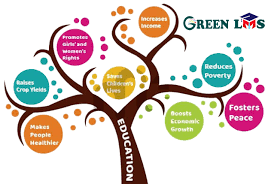How to Use Visualization for Better Memory Retention
Memory is one of the most powerful tools for learning, and improving it can drastically enhance your academic performance. One of the most effective techniques for boosting memory is visualization. This strategy uses mental images to help store and recall information more easily. In this article, we’ll explore what visualization is, why it works, and how students can use it to remember more effectively.
What is Visualization in Learning?
Visualization is the process of creating mental images to represent information. Instead of just reading or hearing something, you associate it with a picture in your mind. This method taps into your brain’s natural ability to remember visual content better than plain text or spoken words.
For example, if you’re learning about the solar system, you could imagine the sun in the center with planets orbiting around it—each with its size, color, and position. This mental picture helps you remember the order and characteristics of the planets more easily.
Why Visualization Helps Memory
There’s a reason the saying “a picture is worth a thousand words” exists. Research in cognitive psychology has shown that our brains process and retain visual information better than other types. This is called the picture superiority effect. When you visualize something, you’re engaging more areas of your brain, making the memory stronger and easier to retrieve later.
Key benefits of visualization:
- Enhances long-term memory
- Improves understanding of complex topics
- Encourages creativity and critical thinking
- Reduces cognitive overload
Techniques to Practice Visualization for Learning
Here are some effective ways to use visualization as a memory aid:
1. Create Mental Movies
Instead of memorizing dry facts, turn them into a story or animated mental movie. Imagine characters, scenes, and actions that represent the key information. For instance, if you’re studying a historical battle, picture the battlefield, the movement of soldiers, and the outcome like a scene from a movie.
2. Use Mind Maps
Mind maps are a great way to connect visual thinking with structured learning. Start with the main idea in the center and draw branches for subtopics. Use symbols, drawings, and colors to make it more engaging. This visual layout helps organize information in a memorable way.
3. Turn Words into Images
Try converting abstract or difficult concepts into simple images. If you’re learning about the water cycle, picture clouds, rain, puddles, and evaporation like a comic strip. Even silly or exaggerated visuals can help—it’s often the unusual images that stick best in your mind.
4. Draw Diagrams and Sketches
Don’t worry about artistic skills—simple drawings can go a long way. Sketch timelines for history, flowcharts for processes, or diagrams for science topics. These visuals act as cues to recall detailed information later.
5. Use Flashcards with Pictures
Instead of using just text-based flashcards, add images. For vocabulary or definitions, pair the word with a related image. This dual coding (using words and visuals) improves both recognition and recall.
6. Color Coding
Colors can be used to represent themes or categories in your notes. For example, in biology, use green for plants, red for animals, and blue for water-related content. The visual distinction helps the brain sort and retrieve data more efficiently.
When to Use Visualization
Visualization can be used across subjects:
- Science: Diagrams of processes, like the human digestive system or the life cycle of a butterfly.
- Math: Visualizing shapes in geometry or drawing number lines for algebra.
- History: Imagining timelines, events, and historical figures in specific settings.
- Languages: Associating new words with pictures or drawing scenes that describe phrases.
Combine Visualization with Other Techniques
While visualization is powerful on its own, it becomes even more effective when combined with other strategies such as:
- Active Recall: After visualizing something, close your eyes and try to recall the image and the information tied to it.
- Spaced Repetition: Review your visuals at regular intervals to reinforce the memory.
- Mnemonics: Create vivid and imaginative visuals that correspond with mnemonic devices.
Common Mistakes to Avoid
To get the most out of visualization, watch out for these common pitfalls:
- Overcomplicating images: Keep your mental visuals simple and easy to recall.
- Using vague pictures: Make sure the image directly represents the concept.
- Not practicing regularly: Like any skill, visualization improves with use. Try applying it during each study session.
Final Thoughts
Visualization is a simple yet incredibly powerful learning tool. By turning information into images, you activate more parts of your brain, making it easier to remember and understand complex topics. Whether you’re a visual learner or just looking to enhance your study habits, visualization can help you study smarter and retain more information with less effort.
Try incorporating these visualization techniques into your next study session and experience the difference in your memory and learning efficiency.


